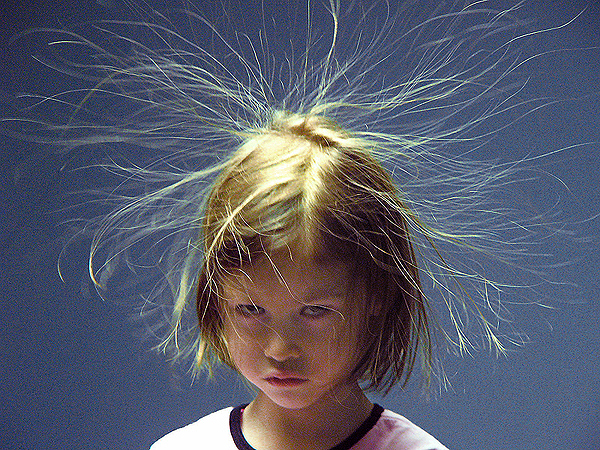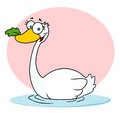Beauty-Oct2025-Personal care
"Beauty care" usually refers to practices, products, and routines aimed at maintaining or enhancing appearance, health, and confidence. It covers a wide range of areas, such as:🌸 Main Areas of Beauty Care🌿 Modern Trends in Beauty Care
- Skin Care – Cleansing, exfoliation, moisturizing, sun protection, and treatments (like serums, masks, or acne care).
- Hair Care – Shampooing, conditioning, scalp care, hair masks, styling, and protecting against heat or damage.
- Nail Care – Manicures, pedicures, strengthening treatments, and cuticle care.
- Makeup – Foundation, eye makeup, lip products, and techniques that highlight or transform features.
- Body Care – Exfoliation, hydration, massages, and treatments to maintain smooth, healthy skin.
- Wellness & Lifestyle – Nutrition, hydration, sleep, and stress management, which all reflect in your skin, hair, and overall appearance.
- Clean and minimal skincare (fewer but effective products)
- Natural and organic products
- Korean skincare routines (multi-step regimens)
- Sustainable and eco-friendly beauty
- At-home beauty devices (LED masks, microcurrent tools, etc.)
Would you like me to create a beauty care guide (daily/weekly routine), or do you want me to suggest categories for your website menu (like “Beauty Care” under “Health” or “Elegance”)?
Here’s a comprehensive general guide to body care, covering hygiene, skin health, and overall wellness. I’ve structured it in a clear, practical way:1. Daily Hygiene
Maintaining basic hygiene is the foundation of body care.2. Skin Care
- Showering/Bathing: Frequency: 1–2 times daily depending on activity and climate. Use mild, pH-balanced body wash or soap. Exfoliate gently 1–2 times per week to remove dead skin cells.
- Hand and Foot Care: Wash hands frequently with soap and water. Keep feet clean, dry, and moisturized to prevent fungal infections.
- Oral Hygiene: Brush twice a day, floss once daily, and use mouthwash if needed.
The skin is the largest organ, so proper care is essential.3. Hair Care
- Moisturizing: Apply body lotion or oil daily after showering to lock in moisture. For dry areas (elbows, knees), use thicker creams.
- Sun Protection: Use SPF 30+ sunscreen on exposed areas daily, even in winter. Reapply every 2–3 hours when outdoors.
- Exfoliation: Use a gentle body scrub or loofah 1–2 times a week. Avoid harsh scrubbing, which can irritate the skin.
- Special Treatments: For acne-prone skin: use gentle cleansers with salicylic acid or benzoyl peroxide. For sensitive skin: opt for fragrance-free products.
Hair is part of overall body care, from scalp to nails.4. Nail Care
- Shampooing: Frequency depends on hair type (oily: every 1–2 days; dry: 2–3 times a week). Use sulfate-free shampoos for gentler care.
- Conditioning: Apply conditioner mainly to hair ends to prevent dryness and split ends.
- Body Hair: Trim or remove body hair based on personal preference. Moisturize afterward to reduce irritation.
Healthy nails reflect good hygiene and nutrition.5. Nutrition & Hydration
- Cleaning: Keep nails trimmed and clean. Avoid biting nails or picking cuticles.
- Moisturizing: Use cuticle oil or hand cream regularly.
- Protection: Wear gloves for cleaning or gardening to prevent damage.
Internal care supports external appearance.6. Lifestyle Habits
- Hydration: Drink at least 8 glasses of water daily.
- Balanced Diet: Include fruits, vegetables, whole grains, and lean proteins. Foods rich in antioxidants, omega-3s, and vitamins A, C, E promote skin health.
- Limit: Excess sugar, processed foods, and alcohol can negatively affect skin and hair.
Healthy habits improve body care results.7. Seasonal Adjustments
- Exercise: Regular physical activity boosts circulation, which benefits skin and hair.
- Sleep: 7–9 hours per night helps skin repair and rejuvenate.
- Stress Management: Meditation, yoga, or hobbies help reduce stress-induced skin issues.
Your body care routine may change with the weather.Quick Daily Routine Example
- Winter: Heavier moisturizers, hydrating masks, and gentle cleansers. Use humidifiers to prevent dry skin.
- Summer: Lightweight lotions, frequent sunscreen application, and sweat control.
- Morning: Shower → Apply sunscreen → Moisturize
- Daytime: Stay hydrated → Touch up sunscreen if outdoors
- Evening: Shower (if sweaty) → Moisturize → Nail/hair check
- Weekly: Exfoliate → Deep conditioning for hair → Face/body mask
If you want, I can also create a simplified “Body Care Routine Chart” you can follow daily, weekly, and monthly—it’s super handy for organizing all of this.
Do you want me to make that chart?
Here’s a general guide to skin care that works as a baseline for most people. You can adapt it depending on your skin type (oily, dry, combination, sensitive, or normal) and your goals (anti-aging, acne control, hydration, brightening, etc.):🌞 Morning Routine🌙 Evening Routine🧴 Weekly/Occasional Steps💡 General Tips
- Cleanser Use a gentle, hydrating cleanser to remove overnight oil and sweat. If you have oily/acne-prone skin, a foaming or gel cleanser may work better. Dry/sensitive skin benefits from cream or lotion cleansers.
- Toner (optional) Balances skin’s pH and preps it for other products. Hydrating toners are great for dry skin; exfoliating toners with AHAs/BHAs suit oily/acne-prone skin (not every day).
- Serum Vitamin C serum is popular in the morning for antioxidant protection and brightening. Other options: hydrating serums with hyaluronic acid, or calming serums with niacinamide.
- Moisturizer Essential for all skin types, even oily. Choose a lightweight gel for oily skin, a richer cream for dry skin.
- Sunscreen (SPF 30 or higher) Most important step for anti-aging and protection. Use broad-spectrum SPF daily, even indoors or in cloudy weather.
- Makeup remover / double cleanse (if you wear makeup or sunscreen) Start with a cleansing oil or balm, then follow with your regular cleanser.
- Cleanser Use the same gentle cleanser from the morning.
- Toner (optional) Can help prep skin for nighttime products.
- Treatment/Serum Retinol or retinoids (for anti-aging, acne, texture). AHAs/BHAs (exfoliating acids for dullness, clogged pores, pigmentation). Use only a few nights a week, not daily at first. Never mix retinol and strong acids in the same routine.
- Moisturizer / Night cream Helps repair and lock in hydration overnight. You can use the same moisturizer as morning or a richer one.
- Eye cream (optional) For puffiness, dark circles, or fine lines.
- Exfoliation: 1–2 times per week (chemical exfoliants preferred over harsh scrubs).
- Face masks: Clay masks for oily skin, hydrating masks for dry/sensitive skin.
- Facial oils: Optional, can be added on top of moisturizer for extra nourishment.
- Always patch-test new products.
- Introduce one new product at a time.
- Be consistent—skin care takes weeks to show results.
- Drink enough water, eat nutrient-rich foods, and sleep well—skin health reflects overall health.
- Avoid over-washing or over-exfoliating, which can damage your skin barrier.
Would you like me to tailor this guide for a specific skin type (e.g., oily, dry, sensitive, or aging skin)?
Here’s a general guide to hair care that covers the essentials for keeping hair healthy, manageable, and looking its best:🌿 1. Understanding Your Hair Type
Different hair types need different care routines.🧴 2. Cleansing💧 3. Conditioning & Moisturizing✨ 4. Styling & Protection🍎 5. Nutrition & Lifestyle🛡️ 6. Common Hair Concerns🧘 7. Gentle Practices
- Straight Hair → Prone to oiliness, needs lightweight products.
- Wavy Hair → Can get frizzy; benefits from hydrating but not heavy products.
- Curly Hair → Tends to be dry; thrives with moisturizing and curl-enhancing products.
- Coily/Kinky Hair → Very fragile and dry; needs deep hydration and gentle handling.
- Wash 2–4 times per week depending on oiliness and activity level.
- Use sulfate-free shampoos if you have dry or color-treated hair.
- Massage scalp gently to stimulate circulation and remove buildup.
- Always follow shampoo with conditioner.
- Apply conditioner mid-length to ends (not roots, unless hair is very dry).
- Use a leave-in conditioner or serum for added softness and frizz control.
- Deep condition once a week (especially for dry or curly hair).
- Limit heat styling (blow dryers, flat irons, curling irons). Use a heat protectant spray.
- Avoid tight hairstyles that pull on the scalp (can cause breakage or traction alopecia).
- For frizz: Use silicone-based serums or natural oils (argan, jojoba, coconut).
- Air-dry when possible, or use the dryer on a cool setting.
- Eat foods rich in protein, iron, zinc, and omega-3 fatty acids.
- Stay hydrated—dehydration leads to brittle hair.
- Manage stress: Stress can cause shedding or thinning.
- Get enough sleep and exercise for circulation and growth.
- Dandruff / Dry Scalp → Use anti-dandruff shampoo (zinc pyrithione, ketoconazole).
- Hair Loss / Thinning → Check for hormonal, nutritional, or stress factors. Consider gentle scalp massage, minoxidil (if recommended by a doctor).
- Split Ends → Trim every 6–8 weeks.
- Color-Treated Hair → Use color-safe shampoo/conditioner, avoid hot water.
- Use a wide-tooth comb on wet hair (never a fine brush).
- Sleep on a silk or satin pillowcase to reduce friction.
- Don’t overwash—stripping natural oils weakens hair.
- Protect from sun, chlorine, and salt water with hats or protective sprays.
👉 Would you like me to make this guide short and practical (like a checklist), or more detailed with product recommendations for different hair types?
Here’s a general guide to nail care that covers the essentials for healthy, strong, and beautiful nails:🧴 Daily Nail Care✨ Cuticle Care💅 Strength & Protection🍎 Nutrition for Nail Health🚫 Common Nail Habits to Avoid🧾 Signs of Nail Problems
- Keep nails clean & dry – prevents bacteria and fungal growth.
- Moisturize regularly – apply hand cream or cuticle oil to prevent dryness and peeling.
- Trim regularly – use clean, sharp nail scissors or clippers; cut straight across and slightly round the tips.
- File gently – always file in one direction with a fine-grit file to avoid splitting.
- Don’t cut cuticles – they protect against infection. Instead, gently push them back after a shower.
- Use cuticle oil – hydrates and strengthens the nail bed.
- Avoid harsh chemicals – wear gloves when cleaning or washing dishes.
- Limit polish remover – choose acetone-free removers; overuse can weaken nails.
- Choose breathable polish if painting often, and give your nails a break between manicures.
- Protein – nails are made of keratin; ensure adequate intake (eggs, fish, beans).
- Biotin – supports nail strength (found in nuts, seeds, whole grains).
- Iron & Zinc – prevent brittleness and white spots (leafy greens, red meat, lentils).
- Hydration – drink enough water for strong, flexible nails.
- Nail biting or picking
- Using nails as tools (to open cans, scratch off labels, etc.)
- Pulling off hangnails (clip them instead)
- Brittle, splitting nails – may indicate dehydration, chemical damage, or nutrient deficiency.
- Yellowing – often from nail polish, smoking, or fungal infection.
- Ridges or dents – can result from aging or underlying health issues.
- Swelling, pain, or discoloration – see a dermatologist if persistent.
✅ Quick Tip: Healthy nails are smooth, evenly colored, and free of spots or ridges. Consistency in care is more important than fancy treatments.
Would you like me to make this into a short checklist/infographic style guide (easy to print or post), or keep it as a more detailed article?
Here’s a comprehensive general guide to makeup that covers all the essentials, from prep to finishing touches. I’ve organized it step by step for clarity:1. Skin Preparation
Good makeup starts with a clean, well-prepped canvas.2. Face MakeupFoundationConcealerSetting PowderContour & BronzerBlushHighlighter3. Eye MakeupEyebrowsEyeshadowEyelinerMascara4. Lips5. Finishing Touches6. Tips & Tricks
- Cleanse: Wash your face to remove dirt, oil, and leftover makeup.
- Exfoliate (1–3 times/week): Helps smooth skin and removes dead cells.
- Moisturize: Hydrates skin and ensures smooth makeup application.
- Primer: Creates a smooth base, minimizes pores, and helps makeup last longer. Choose based on your skin type: Mattifying primer for oily skin Hydrating primer for dry skin Color-correcting primer for uneven tone
- Matches your skin tone and undertone.
- Can be liquid, cream, stick, or powder.
- Apply with a brush, sponge, or fingers. Blend well along jawline and hairline.
- Covers dark circles, blemishes, and redness.
- Use a shade lighter than your foundation for under eyes.
- Locks foundation and concealer in place.
- Focus on oily areas like T-zone.
- Bronzer: Adds warmth to the face. Apply to temples, cheeks, and jawline.
- Contour: Adds depth and definition. Apply under cheekbones, sides of nose, and jawline.
- Adds a healthy flush.
- Smile and apply to apples of cheeks, blending upward toward temples.
- Adds a glow. Apply to high points: cheekbones, brow bones, bridge of nose, and cupid’s bow.
- Shape and fill in using a pencil, powder, or gel.
- Follow natural brow shape for a soft or bold look.
- Light shades for inner lid, medium shades for crease, dark shades for outer corner.
- Blend well for a seamless transition.
- Pencil for soft lines, liquid/gel for sharp lines.
- Apply on upper lash line; optional on lower lash line.
- Lengthens, volumizes, and darkens lashes.
- Apply from roots to tips with a zig-zag motion.
- Exfoliate: Smooth lips with a gentle scrub.
- Lip balm: Hydrate before applying color.
- Lip liner: Defines shape and prevents feathering.
- Lipstick or gloss: Apply for color. Blot and reapply for longer wear.
- Setting spray: Locks everything in place and gives a natural finish.
- Touch-ups: Keep blotting papers or a small powder for midday touch-ups.
- Always blend well; harsh lines can look unnatural.
- Build coverage gradually rather than applying too much at once.
- Choose makeup based on skin type (oily, dry, combination, sensitive).
- Practice makes perfect—don’t be afraid to experiment with colors and techniques.
If you want, I can also create a simple “everyday vs glam makeup guide” chart that shows what to use for minimal makeup versus full glam looks. It’s super practical for beginners.
Do you want me to make that?
Here’s a comprehensive Wellness & Lifestyle General Guide you can use as a framework for a website, blog, or personal reference. I’ve structured it in an organized way with categories, tips, and practical advice:Wellness & Lifestyle General Guide1. Physical Wellness
Focus on keeping your body healthy, active, and energized.
Key Areas:2. Mental & Emotional Wellness
- Nutrition: Eat a balanced diet rich in fruits, vegetables, lean proteins, and whole grains. Stay hydrated – aim for 6–8 glasses of water daily. Limit processed foods, added sugars, and excessive caffeine or alcohol.
- Exercise: Aim for at least 150 minutes of moderate aerobic activity weekly. Include strength training 2–3 times per week. Incorporate flexibility and balance exercises, like yoga or pilates.
- Sleep: Maintain a consistent sleep schedule. Aim for 7–9 hours per night. Create a relaxing bedtime routine and limit screen time before bed.
- Preventive Care: Schedule regular check-ups and screenings. Keep vaccinations up to date. Listen to your body and seek medical advice when needed.
Supporting your mind is as important as caring for your body.
Key Areas:3. Social & Relationship Wellness
- Stress Management: Practice mindfulness, meditation, or deep-breathing exercises. Prioritize self-care activities like reading, hobbies, or nature walks.
- Emotional Awareness: Keep a journal to reflect on thoughts and feelings. Talk to trusted friends, family, or therapists.
- Cognitive Health: Challenge your brain with puzzles, reading, or learning new skills. Limit multitasking and practice focus exercises.
Strong connections improve overall well-being.
Key Areas:4. Environmental & Lifestyle Wellness
- Build meaningful relationships by spending quality time with loved ones.
- Communicate openly and actively listen.
- Set healthy boundaries to protect your emotional energy.
- Engage in community or volunteer activities.
Your surroundings impact your health and lifestyle choices.
Key Areas:5. Financial & Career Wellness
- Maintain a clean, organized, and clutter-free living space.
- Reduce exposure to toxins (air pollution, harsh chemicals, excessive screen time).
- Spend time outdoors to boost mood and vitamin D levels.
- Create a work-life balance, and separate work and leisure spaces.
Financial security and career satisfaction contribute to overall wellness.
Key Areas:6. Personal Growth & Mindfulness
- Budgeting and saving for short- and long-term goals.
- Managing debt responsibly.
- Investing in personal growth, skills, and career development.
- Maintaining work-life balance to prevent burnout.
Continual self-improvement promotes a fulfilling lifestyle.
Key Areas:7. Leisure, Travel, & Experiences
- Set personal goals and track progress.
- Embrace lifelong learning and curiosity.
- Practice gratitude daily.
- Reflect regularly to align actions with values.
A fulfilling lifestyle includes enjoyment and exploration.
Key Areas:8. Daily Wellness Routine (Example)
- Explore hobbies and passions regularly.
- Plan travel or local adventures to recharge and gain perspective.
- Incorporate relaxation and fun into daily routines.
- Balance productivity with recreation.
- Morning: Hydrate, meditate, light exercise, healthy breakfast.
- Midday: Work/study with short breaks, balanced lunch, social check-ins.
- Afternoon: Stretch, walk, or short mindfulness session.
- Evening: Healthy dinner, unwind with hobbies, limited screens.
- Night: Reflect on the day, journal, sleep at a consistent time.
This guide is meant to be flexible and adaptable to your lifestyle and preferences. Each section can be expanded with articles, tips, product recommendations, or routines.
If you want, I can also turn this into a sleek website content outline for a “Wellness & Lifestyle” section, complete with categories, subcategories, and SEO-friendly headings. It would be ready to plug into your existing site menu.
Do you want me to do that?
Your second block of text...








